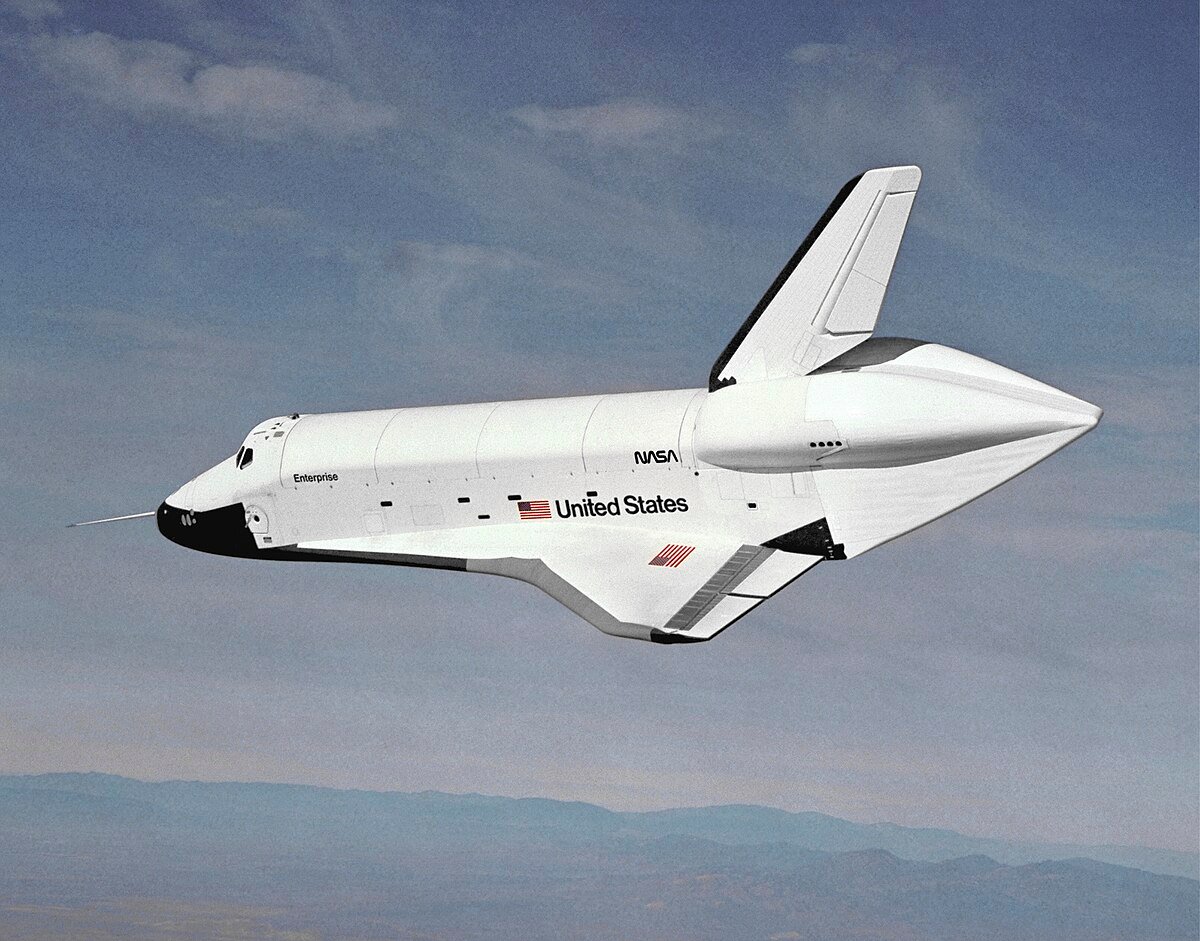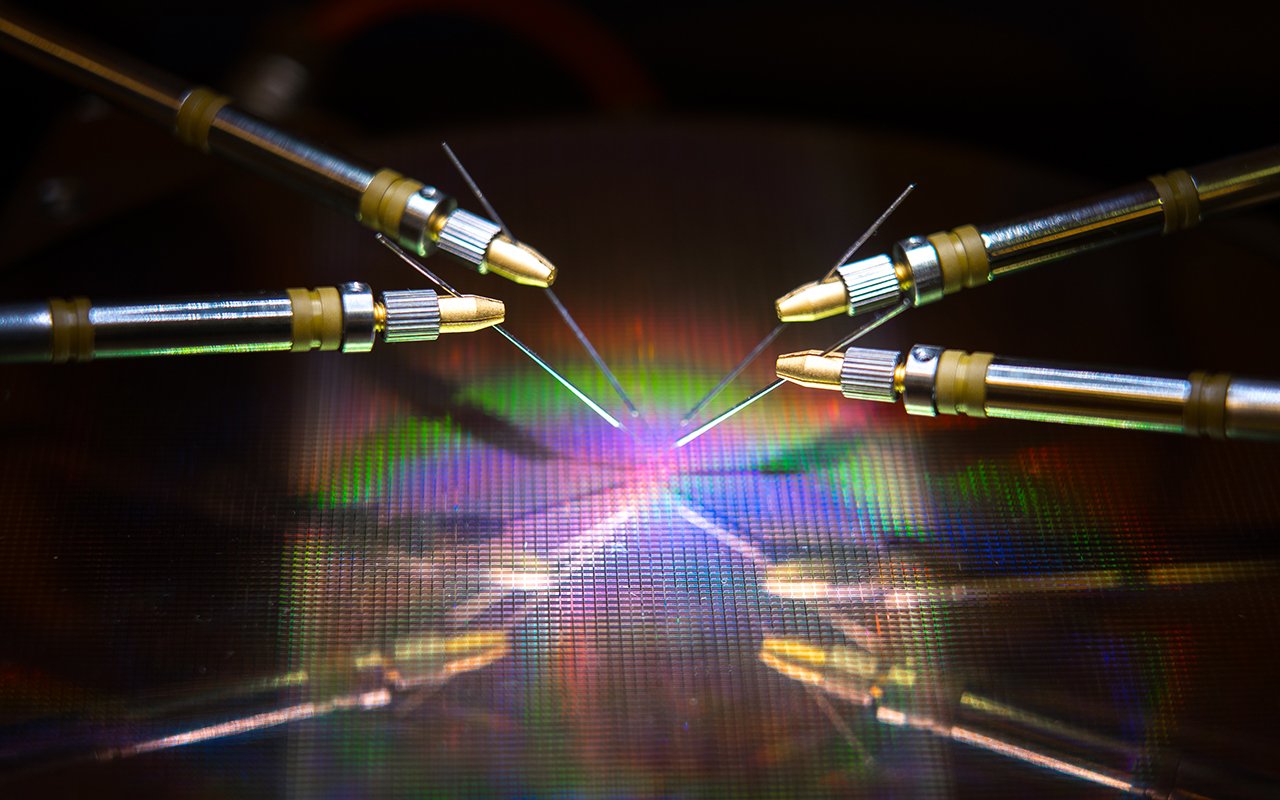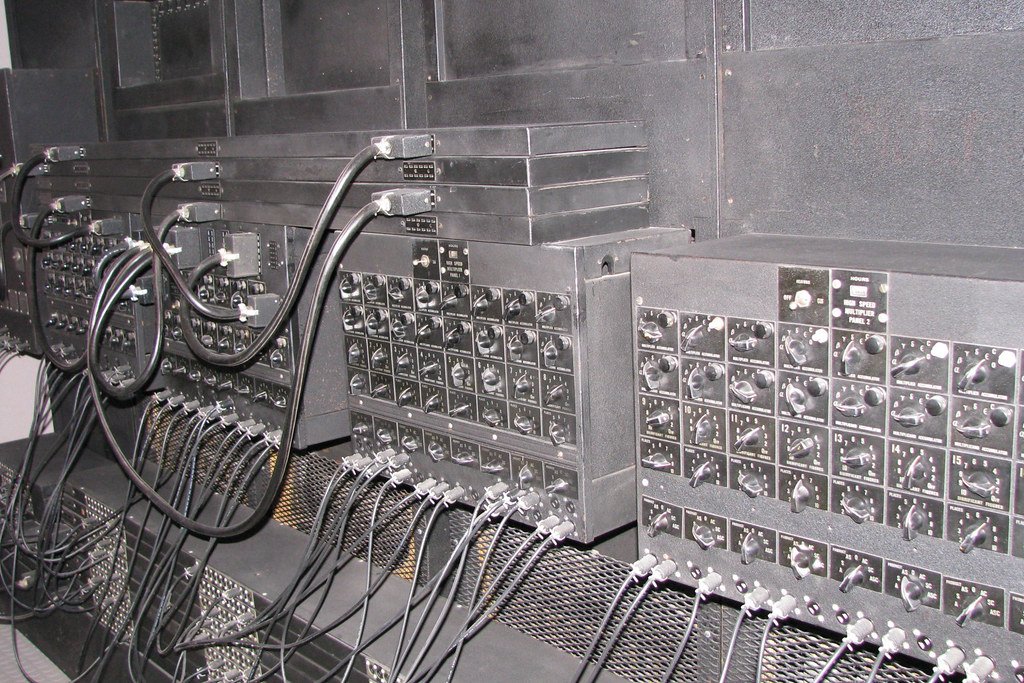ENIAC – the Electronic Numerical Integrator and Computer – was the world’s first electronic, large-scale, general-purpose digital computer. Built during the height of World War II, this room-sized machine marked a milestone in the history of computing and the evolution of computers from mechanical calculators to electronic speed demons. Often hailed as the “first computer” of its kind, ENIAC was a pioneering invention that opened the door to modern computing.
This comprehensive look at ENIAC’s journey – from its invention to its retirement – will explore what ENIAC was and why it was significant, outline a detailed ENIAC timeline, describe its technological innovations, introduce the key people behind it, and highlight its uses during and after WWII. We’ll also delve into its historical and cultural context, media reception, funding, and the lasting legacy ENIAC left on future generations of computers.
Table of Contents
Historical Context: Computing Before ENIAC
Before electronic computers, “computers” were human – often teams of people (frequently women) using mechanical desk calculators to crunch numbers. During WWII, the U.S. military had a pressing need for faster calculation of artillery firing tables (trajectories for shells under various conditions). Hundreds of human computors (as they were called) labored with hand calculators to produce these firing tables, but keeping up with demand was nearly impossible.
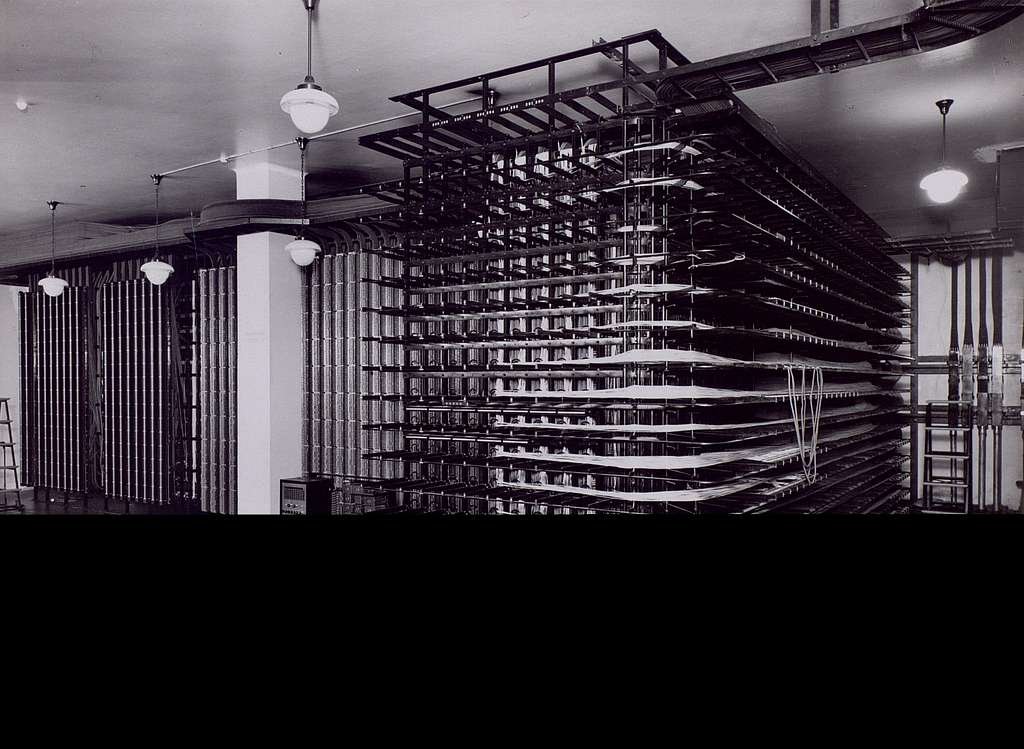
Existing calculating machines like the electromechanical Harvard Mark I could automate some calculations, but they were relatively slow and limited in flexibility. In this context, American scientists and the U.S. Army began exploring a radical idea: using thousands of electronic components (vacuum tubes) to build an “automatic calculator” that could compute in seconds what used to take hours. This was the environment in which ENIAC was conceived – a time when faster computation was desperately needed for the war effort and when the evolution of computers was about to leap from gears and relays to electrons.
Design and Development of ENIAC
The concept of ENIAC emerged from the visionary collaboration of physicist John Mauchly and electrical engineer J. Presper Eckert at the University of Pennsylvania’s Moore School of Electrical Engineering. In June 1941, Mauchly and Eckert began discussing the feasibility of high-speed electronic computing, inspired in part by earlier experimental work like Dr. John Atanasoff’s electronic calculator in Iowa.
By August 1942, Mauchly had drafted a memo proposing the use of vacuum tubes for calculating at unprecedented speeds. Their ideas caught the attention of the U.S. Army. On April 8, 1943, Mauchly and Eckert submitted a formal proposal to the Army’s Ballistic Research Laboratory (BRL) at Aberdeen Proving Ground, outlining an “Electronic Difference Analyzer” to compute artillery tables. The project was code-named Project PX, and the Army Ordnance Department agreed to fund it by mid-1943.
Construction of ENIAC began on May 31, 1943 at the Moore School of Engineering, in Philadelphia. The development was a massive undertaking carried out in secrecy. For security reasons during WWII, those aware of the project spread a rumor that this giant machine was a “white elephant” (a useless boondoggle) rather than reveal its true purpose. In reality, progress was brisk. By July 1944, just a year into the build, two of ENIAC’s computing units (called accumulators) were already operational, proving that the electronic approach could work.
After about two and a half years of design and assembly, ENIAC was completed in late 1945 and fully tested at the Moore School around May 1945. This huge machine contained approximately 17,468 vacuum tubes and weighed about 30 tons. From the outset, ENIAC demonstrated astonishing speed: it could perform calculations about 1,000 times faster than the Harvard Mark I electromechanical computer, and 10,000 times faster than a human working by hand. Such a leap in speed was almost inconceivable at the time.
Programming the ENIAC, however, was no small task – it was done by manually plugging in cables and setting thousands of switches on plugboards for each problem, a process that could take days for a single program. Nonetheless, once programmed, ENIAC executed its calculations electronically at blinding speed with no need to pause for slow mechanical parts.
Despite being built for the war, ENIAC was not finished in time to significantly aid WWII combat operations – the war ended in August 1945 before ENIAC could be deployed. But the machine was ready to usher in a new era of computing. In fact, its very first test programs in late 1945 tackled an urgent post-war question: the feasibility of the hydrogen bomb. ENIAC’s first practical task, run on December 10, 1945, was to perform calculations for the design of a thermonuclear weapon. This marked the beginning of ENIAC’s useful life, immediately applying its power to one of the most complex problems of the day.
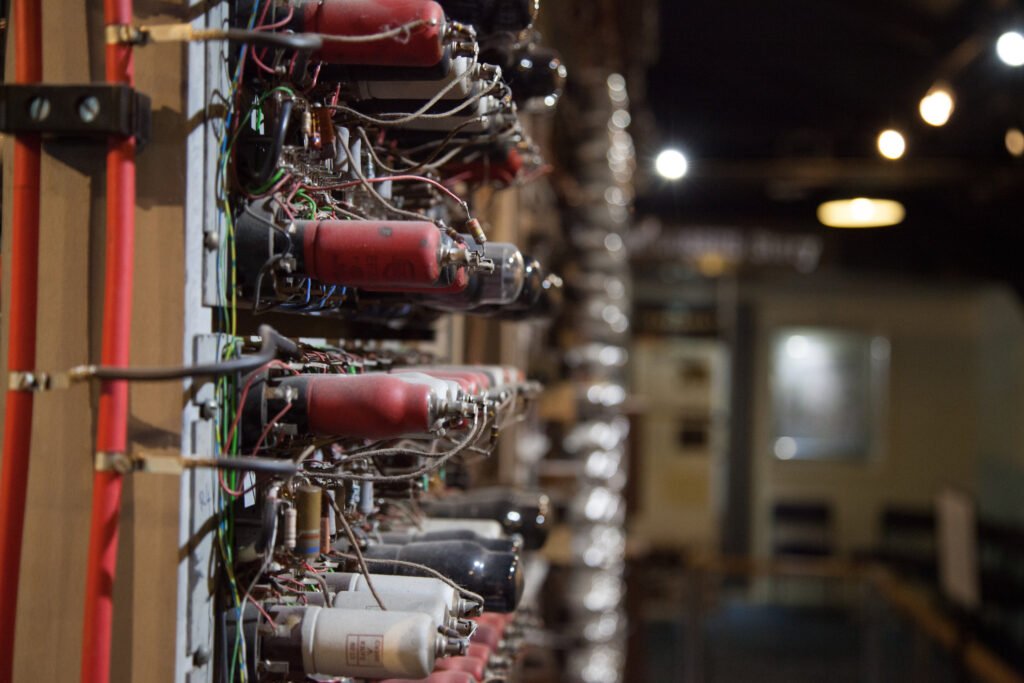
ENIAC Timeline: From Invention to Retirement
To appreciate ENIAC’s journey, let’s walk through a timeline of key events from its inception to retirement. This ENIAC timeline highlights the major milestones in its development, operational life, and legacy:
- June 1941: John Mauchly and J. Presper Eckert meet at the University of Pennsylvania’s Moore School and start brainstorming about high-speed electronic computing. Mauchly soon drafts a memo outlining the use of vacuum tubes for calculation – seeding the idea that will become ENIAC.
- April 1943: Mauchly and Eckert, with backing from physicist Herman Goldstine and the Army, formally propose an “Electronic Numerical Integrator” to the Army’s Ballistic Research Lab for calculating artillery tables. The U.S. Army funds the project (Project PX), initially budgeting around $61,700 but ultimately investing around $400,000–$500,000 by the end of development.
- May 31, 1943: Construction of ENIAC officially begins at the Moore School of Engineering. Eckert is appointed chief engineer and Mauchly the principal consultant, leading a team of engineers, technicians, and “computors” (human computers) who assist with programming and testing.
- Summer 1944: Progress milestones are reached – two accumulators (ENIAC’s basic arithmetic units) are working by July 1944. This partial operation proves the design’s viability even as assembly continues on the dozens of panels and circuits that will make up the full machine.
- Late 1945: ENIAC is completed and undergoes full-scale testing. By November 1945, the inventors publish a confidential report detailing how the machine operates and is programmed. With 18,000 vacuum tubes, 70,000 resistors, 10,000 capacitors, 6,000 switches, and about 5 million hand-soldered joints, ENIAC is a behemoth of complexity. It occupies about 1,500–1,800 square feet (roughly a large room) and consumes 150 kW of power.
- December 10, 1945: ENIAC runs its first actual program, aiding in calculations for the development of the hydrogen bomb at Los Alamos. Although originally built for artillery tables, the urgent post-war nuclear research became ENIAC’s initial assignment.
- February 14–15, 1946: Public unveiling and dedication. ENIAC is introduced to the world in a demonstration at the University of Pennsylvania. The press dubs it a “Giant Brain” for its lightning-fast arithmetic and ability to be reprogrammed for different tasks. A dazzling press demonstration shows ENIAC calculating a missile trajectory in 20 seconds – a task that would take a human days – impressing reporters and onlookers. (For dramatic effect, engineers even added neon bulbs with ping-pong ball diffusers on ENIAC’s panels so that newsreel cameras could see lights flashing as it ran)
- Summer 1946: Having proven their machine, Eckert and Mauchly turn their attention to more advanced designs. In mid-1946, as part of a series of historic lectures on computing at the Moore School, they propose new ideas like a single high-speed memory to hold programs and data (using a mercury delay-line memory) – a key concept toward stored-program computers. Meanwhile, management disputes at the University of Pennsylvania lead Eckert and Mauchly to resign and eventually form their own company to pursue commercial computing (the future UNIVAC).
- July 1946: The Army formally accepts ENIAC from its builders, and plans are made to move it to the Ballistic Research Laboratory in Maryland for ongoing use.
- 1947: ENIAC is disassembled in Philadelphia and moved to Aberdeen Proving Ground, Maryland, where it is reassembled in a new facility. During this process, engineers also implement a significant upgrade: they modify ENIAC to allow a form of stored program operation. By wiring certain functions and using the machine’s function tables as read-only program memory, ENIAC can run sequences of instructions from memory instead of manual reconfiguration for each new problem. This 1948 modification makes ENIAC one of the earliest computers with a stored-program capability (though limited and not as elegant as later designs).
- Late 1940s – Early 1950s: From Aberdeen, ENIAC works almost continuously on a variety of military and scientific computations. Its reliability improves greatly over time. In the initial months, ENIAC’s many vacuum tubes burned out frequently (perhaps one tube failed every day or two), but engineers learned to replace failed components quickly, and improved vacuum tube quality reduced outages to one failure every two days on average. The machine’s modular design – with units that could be swapped in and out – helped minimize downtime. Over its operational life, ENIAC would log over 70,000 hours of run time for calculations.
- April 1950: A notable achievement occurs when ENIAC is used to produce the world’s first computerized weather forecast. A team led by mathematician John von Neumann and meteorologist Jule Charney programmed ENIAC to model atmospheric conditions. The computer took 24 hours to calculate a 24-hour weather prediction (a one-day forecast) – a landmark in numerical weather prediction. Though slow by today’s standards, this was a breakthrough use of computing in science.
- Early 1950s: ENIAC’s workload includes calculating nuclear physics problems, ballistic trajectories, climate research, random number studies, and more. The U.S. Army also allows universities to access ENIAC for research projects, making it an early shared computing resource for civilian science. By this time, however, newer computers are emerging – machines like EDVAC, ORDVAC, and the commercial UNIVAC I (built by Eckert and Mauchly) – which offer stored-program designs, more memory, or faster speeds. ENIAC remains valuable but is no longer unique.
- October 2, 1955: After a decade of service, ENIAC is officially retired. At 11:45 p.m. on that day, power is disconnected from ENIAC for the last time at Aberdeen. By then, ENIAC had performed more arithmetic than arguably all human calculators throughout history up to 1945 – a single machine completing more computations in 10 years than the entire human race had done before its advent. Its components are later distributed to museums; pieces of ENIAC can now be seen at institutions like the Smithsonian in Washington, the University of Pennsylvania, and the U.S. Army Ordnance Museum, preserving the memory of this groundbreaking computer.
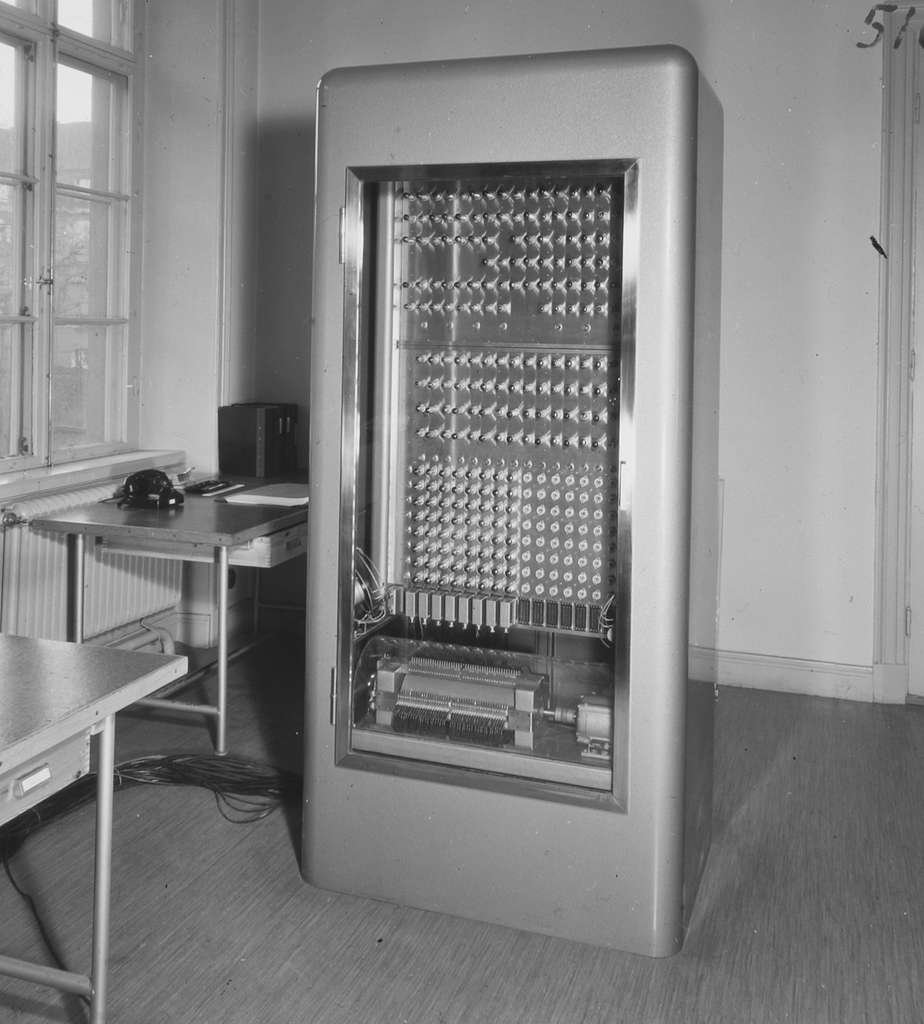
With the timeline in mind, we can now explore what made ENIAC so innovative and who the people were that brought this “giant brain” to life.
ENIAC’s Architecture and Technological Innovations
ENIAC introduced several key technological innovations that set it apart from earlier calculating machines and earned it recognition as the first general-purpose electronic computer. Here are some of the most important features and innovations of ENIAC’s design:
- All-Electronic, High-Speed Calculation: Unlike earlier computers that were mechanical or electro-mechanical, ENIAC was fully electronic, built with almost 18,000 vacuum tubes acting as on/off switches. This allowed ENIAC to operate at electronic speeds – on the order of 5,000 additions per second – roughly 1,000 times faster than electro-mechanical machines of the time. This speed meant a calculation that might take 20 hours by hand or on a desk calculator could be done in seconds on ENIAC.
- Large-Scale and Parallel Design: ENIAC was large-scale in every sense: physically huge and architecturally ambitious. It consisted of 40 plug-in panels (cabinets) arranged in a U-shape that together filled a 30 by 50 foot room. Inside were not only thousands of vacuum tubes but also 70,000 resistors, 10,000 capacitors, 1,500 relays, and 6,000 manual switches, connected by about 5 million soldered joints. ENIAC’s design included 20 accumulators (each a basic 10-digit adder/subtractor unit) that could operate in parallel. This meant different parts of a calculation could be processed simultaneously by different units, a form of parallelism that boosted throughput. For example, while one accumulator was adding numbers, another could be computing a carry or a multiplication unit could be generating a partial product – all in parallel.
- Decimal Arithmetic with Ring Counters: ENIAC performed calculations in decimal (base-10) rather than binary. Each digit of a number was represented by a ring of ten vacuum tubes called a ring counter (each tube representing 0–9 in sequence). Twenty ten-digit accumulators gave ENIAC a kind of electronic “memory” for numbers – it could store up to twenty 10-digit numbers at any given time in these registers. The use of ring counters and vacuum-tube flip-flops for each digit was innovative and allowed reliable storage and arithmetic operations on decimal numbers.
- Modular Functional Units: ENIAC was composed of distinct functional units, each handling a different aspect of computation: 20 accumulators, an initiator and cycling unit to synchronize operations, multiplication units, division and square root units, function tables for storage of constants, and input/output equipment (card readers and punches). This modular approach meant each unit could be built and tested separately and, importantly, repaired or replaced without affecting the whole system. Engineers designed ENIAC so that modules could be swapped out if a component failed – a practical innovation to maximize uptime given the likelihood of vacuum tube burnouts.
- No Stored Program (Initially): One notable aspect of ENIAC (by modern standards) is that it did not have an internal memory to store a program. Instead, programming was done by rewiring and setting switches on the machine. To “load” a new program, operators had to manually configure plugboard cables between units and set dials or switches to enter function parameters. This process could take days for complex problems and weeks to fully debug a program. The upside of this design was that once set up, the program ran entirely at electronic speed – there was no slow instruction reader in the loop. Later, in 1948, ENIAC was modified to allow stored sequences in the function tables, but originally it required manual reprogramming for each task. This limitation spurred the designers (and others like John von Neumann) to conceive of improved stored-program architecture in subsequent machines, where programs and data would reside in a common high-speed memory.
- Input/Output with Punch Cards: ENIAC used IBM punch card equipment for input and output. This allowed it to read in data (like a set of initial parameters or a data table) from punched cards and to punch results onto cards. This was a practical solution to get data in and out, leveraging existing technology from business machines. However, the card reader/punch worked electromechanically and was slower than ENIAC’s electronic brain, so often results would accumulate in the machine’s registers faster than they could be printed or punched.
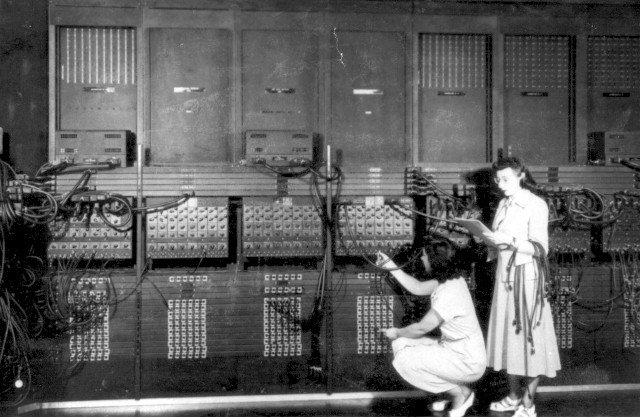
Many of these design choices were pioneering. ENIAC’s successful use of thousands of vacuum tubes dispelled the widespread fear that tubes were too unreliable in such quantities – in operation, ENIAC’s vacuum tubes, once conditioned, had an average failure rate of one tube every two days, meaning the machine could run for two days before a tube typically needed replacement. This reliability was much better than skeptics had predicted and proved that large-scale electronic computing was feasible.
Another innovation was how ENIAC managed its heat and power. Consuming about 150 kilowatts of electricity, ENIAC generated a great deal of heat. The machine was equipped with blowers and an air conditioning system to cool the tubes, and its panels were designed with ventilation ducts to carry away hot air. Engineers even installed a large power line feeder directly to the Moore School building to handle ENIAC’s power draw.
In short, ENIAC introduced the world to the possibilities of electronic computing: speed, reprogrammability (even if cumbersome by today’s standards), and the scale at which complex problems could be tackled. It laid the groundwork for the next designs – like EDVAC, EDSAC, and UNIVAC – which would refine these concepts further (especially by adding stored-program capability).
Key Individuals and Organizations Behind ENIAC
Building ENIAC was a team effort that involved visionary scientists, engineers, a supportive military, and even pioneering programmers who blazed a trail in a field with no precedent. Here are the key individuals and organizations who played major roles in ENIAC’s creation and operation:
- John W. Mauchly (Physicist) – Mauchly was the co-inventor of ENIAC who first envisioned using electronics for high-speed computing. His 1942 memo on using vacuum tubes for calculation set the project in motion. Mauchly worked on the logical design of ENIAC and later co-designed its successor (EDVAC). His curiosity and foresight were instrumental in proposing that the machine be general-purpose (not just fixed to one task).
- J. Presper Eckert (Electrical Engineer) – Eckert was the chief engineer of ENIAC and co-inventor alongside Mauchly. Just 24 years old when the project began, Eckert was a prodigy in electronics. He led the hardware design and oversaw the assembly of ENIAC’s thousands of components. Eckert’s engineering brilliance solved countless practical problems (from circuit stability to cooling), and he later invented the mercury delay-line memory for the next-generation EDVAC design. Eckert’s insistence on rigorous testing and quality components was key to ENIAC’s success.
- Herman H. Goldstine (Mathematician, U.S. Army) – As an Army officer liaison to the project, Goldstine coordinated between the Moore School team and the Army’s Ballistic Research Laboratory. He was involved from the proposal stage in 1943 through ENIAC’s completion. Goldstine’s understanding of the Army’s needs and his mathematical background helped ensure ENIAC’s design would actually solve the required ballistic equations. He later co-authored a book on the history of computing and worked with von Neumann on software for early computers.
- U.S. Army Ordnance Department & Ballistic Research Laboratory (BRL) – The Army not only funded ENIAC but also provided the problem that drove its development (artillery firing table computation). Major General Gladeon Barnes and others in Army Ordnance championed the project, allocating roughly $400–500k by 1946 (equivalent to nearly $7 million in today’s terms). The BRL at Aberdeen Proving Ground became ENIAC’s home after 1947, and it was used for both military and scientific research. The Army’s support was crucial in an era when such an ambitious and expensive research project had few other potential sponsors.
- University of Pennsylvania’s Moore School of Electrical Engineering – The Moore School provided the facilities, engineering staff, and academic environment where ENIAC was built. Key Moore School personnel included Professor John Grist Brainerd, who was the administrative director of the ENIAC project, and engineers like Arthur Burks, Franklin (Fran) Holtz, and Nicholas Metropolis (who later went to Los Alamos), who contributed to various parts of the design and programming. The Moore School also famously hosted the Summer School lectures in 1946 that disseminated knowledge from the ENIAC project to a wider audience of engineers.
- The Programmers (The “ENIAC Six”) – Perhaps the unsung heroes of ENIAC were the six young women who became its first programmers. Kay McNulty, Betty Jennings, Betty Snyder, Marlyn Wescoff, Fran Bilas, and Ruth Lichterman were hired by the Army during the war as human “computers” and then tapped to figure out how to program the new ENIAC. Working with no manuals (since none existed), they had to learn ENIAC’s wiring diagrams and design logical sequences of plugboard connections to get the machine to solve problems. These women programmed the ballistic trajectories demonstration in 1946 and many subsequent problems. At the time, their contributions were not publicly acknowledged – programming was not yet seen as a high-profile skill – but today they are rightly recognized as computing pioneers. Their work demonstrated that programming (even via cables and switches) was as crucial to an electronic computer’s success as the hardware. In a very real sense, they were the world’s first computer programmers, inventing techniques as they went along.
- John von Neumann (Mathematician) – Though not part of the core ENIAC build team, von Neumann became heavily involved in 1944–45 when he learned of ENIAC while working on the Manhattan Project. He recognized the importance of such a computer for a range of scientific problems. Von Neumann contributed ideas to ENIAC’s usage (he helped run the thermonuclear calculations on ENIAC) and, more importantly, he formulated the theoretical design of the next machine, EDVAC, which introduced the stored-program concept. His famous “First Draft of a Report on EDVAC” circulated in 1945, drawing on the ENIAC team’s input and outlining what became known as the von Neumann architecture (program and data stored in the same memory). Von Neumann’s involvement lent intellectual weight to the project and bridged it to the emerging field of computer science.
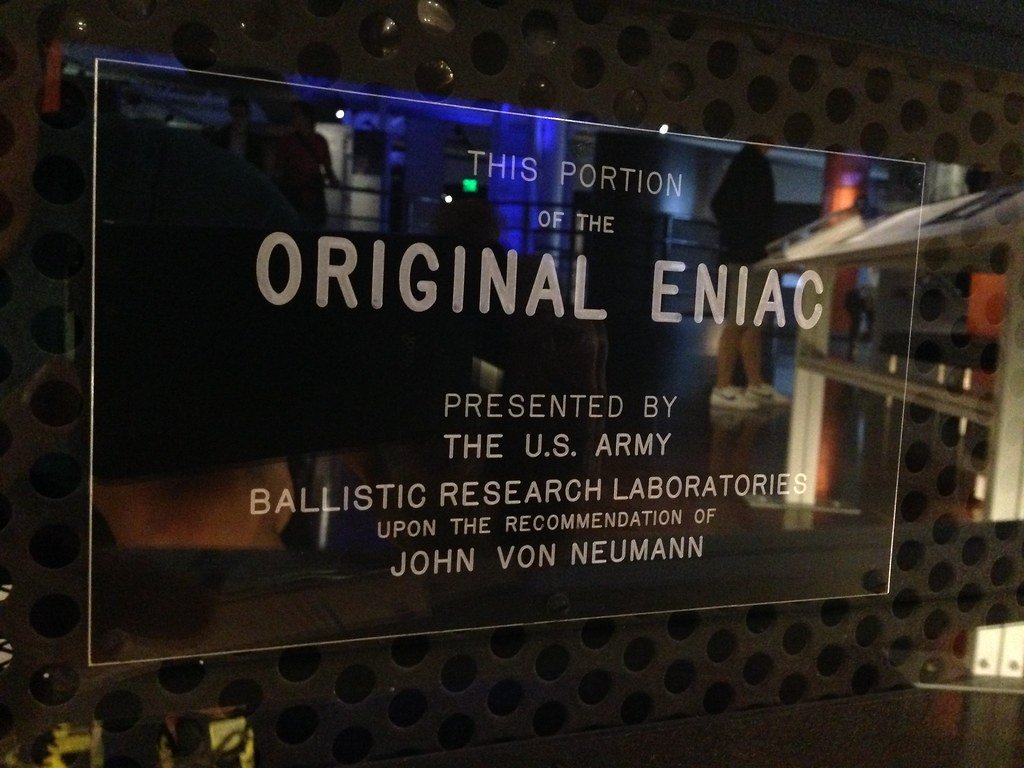
Together, this diverse group – visionary professors, brilliant young engineers, Army officers, and female programmers – made ENIAC possible. It was a collaboration between academia, government, and a new kind of interdisciplinary workforce. Each brought their expertise: theoretical knowledge, engineering skill, organizational support, domain knowledge of ballistic math, and programming ingenuity. The success of ENIAC was a testament to this collaborative innovation.
ENIAC in Action: Wartime Uses and Post-War Applications
What was ENIAC used for? Although conceived for a military purpose, ENIAC’s actual uses spanned both wartime needs and a host of post-war scientific applications. Here we explore how ENIAC was employed during its active life and how it influenced computing practices.
- Artillery Firing Tables: The original mission of ENIAC was to compute artillery firing tables for different weapons under varied conditions (range tables that gunners would use in the field). These calculations involved solving complex differential equations to predict the trajectory of shells. During WWII, this was a critical and time-consuming task done by human computers. ENIAC was designed to automate and accelerate this process. In tests, ENIAC proved it could calculate a trajectory (which might require 30–60 seconds of real-time flight) in only 20 seconds of computing time. Although the machine wasn’t ready before the war ended, once operational it continued to produce firing tables for new artillery and ordinance in the immediate post-war years. This helped the Army update its ballistics data far more quickly than before.
- Thermonuclear Weapon Calculations: As World War II ended, a new race began – the development of the hydrogen bomb. ENIAC was enlisted in this effort almost immediately. In December 1945, with Los Alamos scientists, ENIAC ran calculations to assess the feasibility of the H-bomb (thermonuclear fusion reactions). This was ENIAC’s first major problem set and an important contribution to what became the successful development of thermonuclear weapons in the early 1950s. The ability to do iterative, long calculations on ENIAC saved scientists countless hours and allowed them to explore complex physical models that would have been impractical otherwise.
- Ballistic Research and Missile Trajectories: Beyond artillery shells, ENIAC was used to model more advanced ballistic problems, including rocket trajectories and later missile guidance calculations. Its speed and reprogrammability (by experts) meant it could simulate different flight paths and help design better rockets and missiles as the Cold War era progressed.
- Mathematics and Science Research: The Army made ENIAC available to academic and civilian researchers as well, recognizing its value as a general-purpose calculator. Many pioneering computational problems were first tackled on ENIAC:
- Weather Prediction: In 1950, meteorologists ran the first computer-assisted weather forecast on ENIAC. Though the setup took weeks and the computer ran for 24 hours to produce a one-day forecast, it proved that numerical weather prediction was possible. This experiment was the genesis of modern weather forecasting models.
- Cosmic Ray Studies: Physicists used ENIAC to analyze cosmic ray interactions and subatomic particle behavior. The machine could handle the intensive computations needed for early high-energy physics research.
- Atomic Energy and Reactor Calculations: Beyond weapons, ENIAC helped in performing calculations related to nuclear reactor designs and atomic energy yields. These complex calculations of neutron diffusion and chain reactions benefitted from ENIAC’s speed.
- Fluid Dynamics and Wind Tunnel Design: Engineers employed ENIAC to solve equations in fluid dynamics. For instance, it was used in wind tunnel design studies, crunching the numbers on airflow equations that would be laborious by hand.
- Pure Mathematics: ENIAC also delved into pure math problems, such as tests of prime number theories, generating random number sequences for research, and solving large systems of equations, showcasing its versatility.
- Weather Prediction: In 1950, meteorologists ran the first computer-assisted weather forecast on ENIAC. Though the setup took weeks and the computer ran for 24 hours to produce a one-day forecast, it proved that numerical weather prediction was possible. This experiment was the genesis of modern weather forecasting models.
- Random-Number Studies: Interestingly, ENIAC was used to test random number generation methods and perform Monte Carlo simulations – a technique named and popularized in the late 1940s where random sampling is used to solve physical or mathematical problems. In 1947–48, scientists like Stanislaw Ulam and Nicholas Metropolis ran Monte Carlo simulations on ENIAC (for example, to estimate neutron behavior in nuclear reactions) which laid the groundwork for this now-common computational technique.
- Cryptography: While not as documented as other uses (and some remained classified), there are hints that ENIAC was also applied to code-breaking or cryptographic analysis. During WWII, electronic machines like the British Colossus were used for code-breaking. ENIAC, being programmable, could have been directed at similar pattern-searching problems in cryptanalysis in the late 1940s, though specifics are scarce due to secrecy.
What’s notable is how ENIAC evolved from a single-purpose wartime tool to a multi-purpose computing service in the years after the war. Its flexibility proved greater than initially imagined – thanks to the ingenuity of its programmers – allowing it to tackle problems far beyond artillery shells. In doing so, ENIAC showed researchers in various fields what computing could do. Each project it undertook was effectively a case study in a new kind of scientific method: using a computer to simulate or calculate phenomena, from the path of a shell to the behavior of weather systems.
Furthermore, ENIAC’s operation at Aberdeen meant it was one of a kind; users had to come to the machine (or send tasks to be run on it). This foreshadows the era of centralized mainframes and time-sharing to come. The Army’s willingness to share ENIAC with civilian scientists also helped seed computational science in the broader research community.
Public Unveiling and Media Reception
When ENIAC was finally revealed to the public in February 1946, it caused a sensation. This hulking machine with flickering lights captured the imagination of the press and the public. Media reception was overwhelmingly awe-struck, often bordering on fanciful in its analogies.
Newspapers famously dubbed ENIAC a “Giant Brain”. Headlines marveled at how this electronic “brain” could do in seconds what a team of mathematicians would take days or weeks to accomplish. The anthropomorphic comparison of computers to brains or thinking machines took off from ENIAC’s debut and has endured in popular culture ever since.

At the public demonstration on February 15, 1946, journalists watched ENIAC compute a shell trajectory from scratch, outputting a firing table line that showed where a projectile would land. The machine did it faster than the actual shell flight time – a dramatic proof-of-concept.
To make the event visually engaging, ENIAC’s team rigged up rows of neon lights on the panels that would flash as intermediate results were transferred between units. They even placed translucent half-ping-pong balls over the lights with digits painted on them, so observers could see numbers pulsing across ENIAC’s panels. This produced a captivating light show as the calculation proceeded, leading newsreel cameramen to capture footage that would later be shown in movie theaters. The public had never seen anything like it – a massive machine that seemed to be thinking.
The press coverage often carried a mix of admiration and an almost science-fiction wonder. Articles speculated on how such “electronic brains” might someday do everything from controlling factories to predicting weather (a prediction that came true) or even making decisions. One oft-quoted line facetiously suggested that at the rate technology was advancing, machines “would be smarter than humans by tea-time next Wednesday”. ENIAC, in reality, was essentially a super-fast calculator – “basically a spreadsheet app” as one historian wryly noted – but the mystique of a machine that could “think” was born in the public eye.
Crucially, ENIAC’s unveiling shifted the word “computer” from meaning a person to meaning a machine in the popular lexicon. Before ENIAC, a “computer” was usually a job title for someone who computed. After ENIAC’s splash, “computer” increasingly came to refer to devices like ENIAC. Media stories helped solidify this new usage by repeatedly referring to ENIAC as an “electronic computer” and describing its feats.
The cultural impact of ENIAC’s media coverage was significant. It inspired imaginations outside the military and academic sphere. Science fiction writers, for example, took note. The late 1940s and 1950s saw numerous portrayals of giant computers in fiction and film – often as vast rooms of blinking lights – clearly patterned after ENIAC’s looks. Even decades later, depictions of computers in movies (like the blinking consoles of Star Trek, or the sinister AI HAL 9000 with its electronic eye) owe a debt to the image of the computer as a big panel of lights, an image first imprinted by ENIAC’s demo.
From a funding perspective, the positive publicity also helped justify the money spent and encouraged further investment in computer development. Although ENIAC’s price tag of about $400–500k was steep for a secret wartime project, the press coverage after the war framed it as money well spent on a marvel of science and engineering. This favorable view likely helped figures like Gen. Barnes and the U.S. Army in advocating for subsequent computer projects (like EDVAC and ORDVAC) in the late 1940s.
In summary, the unveiling of ENIAC was not just a technical milestone but a media event. It turned the ENIAC into a celebrity machine – a symbol of American innovation. The term “giant brain” captured the mix of respect and fear that would characterize society’s relationship with computers for years to come. On one hand, ENIAC showed that machines could relieve humans of tedious drudgery; on the other, it raised the question (in some curious minds) of whether machines might one day rival human intelligence. That dual narrative in the media can be traced back to the excitement around ENIAC’s debut.
Challenges and Limitations in Operation
While ENIAC was a groundbreaking achievement, operating it was not without challenges. It’s worth noting a few of the practical difficulties the team faced during ENIAC’s decade of service:
- Programming Effort: As mentioned, programming ENIAC was labor-intensive. Setting up a complex problem could require thousands of cable connections and switch settings, which had to be done correctly and then double-checked manually. The ENIAC programmers developed flowcharts and instruction sheets to plan out these configurations, essentially writing the “code” on paper and then physically implementing it on the machine. Debugging was similarly painstaking – if an output was wrong, one had to trace through cables and settings to find a mis-plugged cable or a switch in the wrong position.
- Maintenance: ENIAC’s thousands of components required constant maintenance. Teams of technicians were employed to replace burned-out vacuum tubes (which happened roughly every other day on average) and to test circuits. According to reports, ENIAC was down for maintenance about half the time in its early months, though this improved later. The maintenance crew used techniques like “aging” new vacuum tubes (running them in test racks to catch early failures) before inserting them into ENIAC, which increased reliability. The modular design helped – entire panels could be pulled out and serviced while spares were plugged in.
- Heat and Power: ENIAC’s power consumption (150 kW) could dim lights in the building when turned on. The heat generated by thousands of tubes made the computer room very warm. Air conditioning and blower fans ran continuously; still, ENIAC’s environment had to be carefully controlled, because overly high temperatures could shorten tube life or cause malfunctions.
- Obsolescence: By the early 1950s, ENIAC began to show its age compared to newer designs. Stored-program computers like the Cambridge EDSAC (1949) and the UNIVAC I (1951) could be programmed much faster (by loading code into memory rather than rewiring). Some later machines also had binary arithmetic which proved more flexible and efficient than ENIAC’s decimal system. ENIAC’s original design did not anticipate these innovations, and while it was upgraded in 1948, it couldn’t fully match the convenience of the next generation. Thus, by the time of its retirement in 1955, ENIAC was technologically superseded by several “second-generation” (and even late first-generation) computers. This is a natural part of the evolution of computers, but it’s striking how quickly ENIAC went from revolutionary to outdated – in less than 10 years.
Despite these challenges, ENIAC remained a usable and important tool through the mid-50s, mainly because of the dedication of its support staff and users who continuously kept it running and productive. It’s a testament to its robust design that ENIAC could run for 8-10 years nonstop, given proper care, in an era before solid-state electronics.
ENIAC’s Retirement and Legacy
By 1955, the decision was made to retire ENIAC. The field of computing had advanced rapidly, and multiple stored-program computers were now operational, offering easier programming and greater capabilities. On October 2, 1955, ENIAC was powered down for the last time. That final shutdown marked the end of an era – the close of the world’s first great electronic computing workhorse.
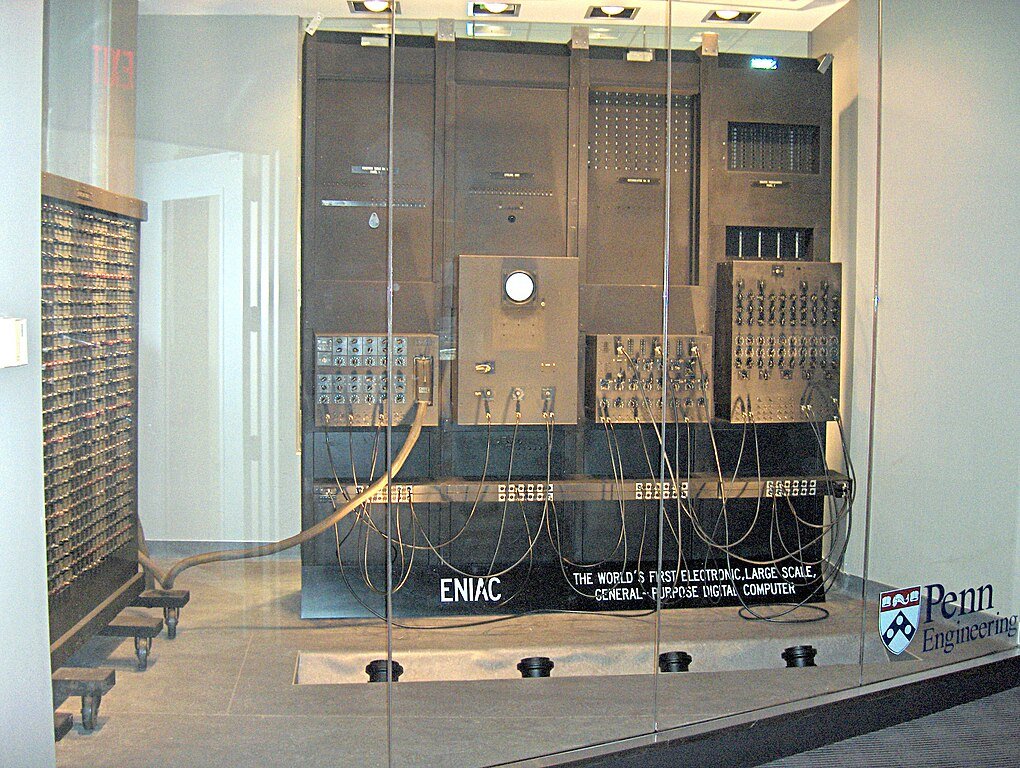
ENIAC’s physical components were carefully preserved. Today, if you wish to see a piece of this legendary machine, you can: sections of ENIAC are on display at the Smithsonian Institution in Washington, D.C., at the University of Pennsylvania (in the very engineering building where it was born), at the U.S. Army Field Artillery Museum in Fort Sill, and at the Science Museum in London, among others. These exhibits usually showcase a few of ENIAC’s cabinets, with their dials, switches, and vacuum tube sockets visible – relics of a bygone technological age.
However, ENIAC’s legacy extends far beyond museum pieces. Its influence on the subsequent development of computers was monumental:
- Proof of Concept: ENIAC demonstrated conclusively that high-speed electronic computing was possible and reliable. This validation was crucial – had ENIAC failed often or not delivered as expected, funding and interest in computer development might have waned. Instead, its success spurred a wave of investment and projects in computing in the late 1940s and 1950s, both in the U.S. and internationally.
- Advancing Computer Architecture: Lessons learned from ENIAC fed directly into the design of new machines. The most immediate successor was the EDVAC (Electronic Discrete Variable Automatic Computer), which was designed while ENIAC was still being finished. EDVAC introduced the stored-program architecture (instructions stored in a memory) and a binary system – ideas that evolved from discussions among the ENIAC team and John von Neumann. The famous von Neumann architecture (input, output, memory, control unit, arithmetic unit) that underpins virtually all modern computers has its roots in those wartime conversations and reports. In a sense, ENIAC was the last of the “old style” computers and the springboard to the new.
- The Moore School Lectures: In the summer of 1946, the University of Pennsylvania hosted a series of lectures titled “The Theory and Techniques for Design of Digital Computers” (often just called the Moore School Lectures). Many of these were delivered by ENIAC’s creators or those familiar with it. Attendees included engineers from around the world who would go on to build their own computers (for example, Maurice Wilkes, who built EDSAC in Cambridge, and engineers from IBM, and from companies that would build early computers in Australia and Japan). By sharing the ENIAC/EDVAC concepts, these lectures disseminated the know-how needed to spark computer development globally. Thus, ENIAC indirectly helped “jump-start” the computing field beyond one machine or one country.
- Commercial Computing and UNIVAC: Mauchly and Eckert, the fathers of ENIAC, left Penn and eventually founded the Eckert-Mauchly Computer Corporation. They leveraged their ENIAC experience to build UNIVAC I, the first successful commercial computer (delivered in 1951). UNIVAC famously predicted the 1952 U.S. presidential election results and was used by businesses and government, proving the market for computers. This led to the rise of the computer industry, with IBM and others entering the fray. It’s fair to say that ENIAC’s creators helped birth not just a series of machines but an entire industry.
- Influence on Science and Engineering: The problems solved on ENIAC were some of the first instances of using computers in scientific research, establishing a new approach to problem-solving. Fields like meteorology, nuclear physics, logistics, and engineering design saw that computational simulation and analysis could become a third pillar of science (besides theory and experiment). ENIAC’s success in weather forecasting, for example, directly led to further projects and eventually to routine weather prediction by computers. In academia, being exposed to ENIAC’s capabilities opened researchers’ eyes to algorithm development – numerical methods for computers became a hot topic once a machine existed to run them.
- Human Capital and Training: Many people who cut their teeth on ENIAC went on to have illustrious careers in computing. The women programmers of ENIAC continued in software and systems development (Kathleen “Kay” McNulty and Betty Jennings, for instance, worked on early UNIVAC programming; Betty Holberton – formerly Betty Snyder – became a leading programming language designer). Herman Goldstine joined the Institute for Advanced Study and helped develop early software concepts. Arthur Burks became a professor and wrote about logic circuits. The “ENIAC alumni” carried their expertise everywhere, educating others and influencing projects. This helped propagate a culture of computing know-how across universities, industry, and the military.
- Legal Legacy – The ENIAC Patent: ENIAC was so significant that a patent was filed for its design as a general-purpose electronic computer. The patent (U.S. Patent 3,120,606) was ultimately granted in 1964 to Mauchly and Eckert, though by then the technology had far outpaced ENIAC. In a famous 1973 court case (Honeywell Inc. vs. Sperry Rand), that patent was challenged and declared invalid. The court found that the concepts were already in the public domain via von Neumann’s EDVAC report and that Mauchly had been influenced by prior work (namely Atanasoff’s 1940 design). This ruling freed the computer industry from patent royalties and also ensured that other early innovators (like John Atanasoff) received recognition in the history books. While a legal footnote, the “ENIAC patent” saga underscores how foundational ENIAC was considered – effectively the patent on the concept of an electronic computer – and how its legacy prompted discussions about who invented what in computing’s dawn.
- Cultural Legacy: Culturally, ENIAC left an imprint as well. It has been referenced in literature, documentaries, and even the Guinness Book of World Records (as the first large-scale general-purpose computer). The image of its operators – particularly the women connecting cables – has become an iconic representation of early programming, helping to inspire efforts to highlight women’s contributions in tech history. Philadelphia, where it was born, has celebrated “ENIAC Day” on its anniversaries. In computing circles, ENIAC’s name itself evokes the origin story of modern computers, much like mentioning the Wright Brothers does for aviation.
In retrospect, ENIAC was not a one-off gadget but a turning point in the evolution of computers. It bridged the gap between theoretical ideas of a “universal computing machine” and the practical reality of electronic computation. After ENIAC, the question was no longer “Can we build an electronic computer?” – that had been answered with a resounding yes – but rather “How can we build them better, faster, more conveniently?” That shift in mindset, from possibility to optimization, is a profound part of ENIAC’s legacy.
Finally, ENIAC’s story is a reminder of how necessity and opportunity in a time of crisis (World War II) accelerated innovation. The wartime urgency provided resources and focus to solve a critical problem, yielding a machine that ended up far exceeding its initial purpose.
From invention to retirement, ENIAC’s life was relatively short, but the revolution it started in computing continues to this day. Every smartphone, every laptop, every modern computer carries a bit of ENIAC’s DNA – the idea that with electronics we can build a general-purpose problem-solving machine. In the grand timeline of computing history, ENIAC’s chapter stands out as the moment the electronic age of computation truly began, setting us on the path to the digital world we now inhabit.
